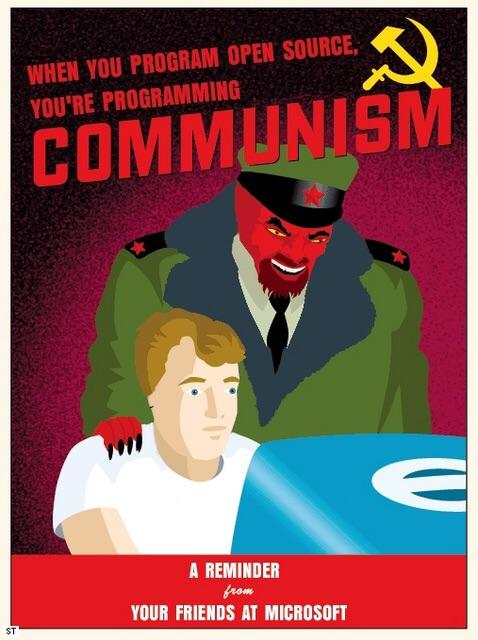

Cool! I love war!


Cool! I love war!


At least 15 people were beaten up and hurt badly by the police.


That is not true. The Lenin-Liebknecht-Luxemburg Demonstration has been a thing since 1919 to honor the deaths of these revolutionaries and has been a big state event during the existence of the DDR. It’s independently organized by revolutionary organizations from all across Germany. The Junge Welt and the Rosa Luxemburg Konferenz has only been a thing since 1996 and is something completely different that happens on the same weekend. Both the RLK and Die Linke (left non-revolutionary socdem party) are somehow trying to claim this event.


Antideutsche sind keine linken.


I hope they have a good plan for the resulting high-level nuclear waste. Knowing China, they probably have, but reporting on that is unfortunately very minimal.


Bluetooth is very widespread but neither free to use nor an open standard. I can’t find any real technical info on this new technology or any references to it being any more open than Bluetooth. So far this seems like another closed, proprietary technology by Huawei and “industry partners” so I honestly don’t really care about it. This seems more like a move by Huawei to get away from having to pay licensing fees for Bluetooth without any benefits for users or the tech community as a whole.


Lenin has written about this kinda stuff more than hundred years ago. It has been obvious to communists but the capitalist media turn a predictable blind eye to this.
Ah, sorry for the slow replies, I didn’t notice my inbox.
Generally the second one, but it’s kinda both. Modern flash memory works by storing an electric charge in a memory cell and the number of writes per cell is limited. To make memory more dense (and thus cheaper), modern designs store multiple bits in one single cell (called MLC flash, usually TLC flash currently with three bits per cell). This means that changing a single bit usually leads to the whole cell being read and written again. All of this is abstracted away by the memory controllers on modern SSDs. In general the controller will handle stuff like defragmentation and wear leveling on the fly and none of this is transparent to the user. So in theory even a once written file could be moved to a different part of the memory chips when the controller sees fit. In general the controller tries to keep cell writes to a minimum and tries to spread them out evenly over the whole drive and when cells start failing there are usually spares that are not directly visible to the user (over-provisioning).
The only thing you can really influence is the amount of “locked in” cells, aka how much of the SSD is filled up with data. As long as there is plenty of room to spread out writes, SSDs will last ages. But if you have a 120 GB filled with 119 GB of data and you write a couple of hundred MB a day… the controller will struggle to keep the overall drive healthy.
So I’d say if it’s not some very heavy usage (like 24/7 writing server logs to disk on a production server) don’t worry about it. I’ve never had an SSD fail, I usually replace them with larger/newer ones before that point. I have an 128 GB SSD from 2011 that got used in my daily system for like 7 years in suboptimal conditions (drive was pretty full most of the time) that’s still perfectly healthy. Just buy a 1TB drive and forget about it.
On the topic of backups: It’s always good to keep backups but SSDs are not the best medium for that. Traditional HDDs in some reduntant/resilient configuration like a RAID array are way better for that.

Bears are friends, not foes 
On the contrary it’s better to get a bigger SSD since the writes for swap usage get distributed more evenly across the larger memory pool. Modern SSDs can take a lot of writes before degrading since their controllers are very smart. USB drives get worn out a lot faster since they lack redundancy in storage and good memory controllers.
Yes. Land is always owned by the state and only up for lease. Other types of capital can be owned by individuals or groups. There are private companies, factories owned by individuals etc.
You mean the bourgeois state forcing its people to die in a senseless imperialist mess of a war?
All of the Chinese OEMs are pretty bad with software support tbh. Here’s an overview. Especially cheap phones will get very bad software support. If you want a capable cheap phone with reliable software updates, Samsung is probably your only safe bet right now (and they’re not Chinese).
Xiaomi has recently started making some promises for software updates, but only for their flagship devices. None of the Chinese OEMs want to support their cheaper throwaway devices. Also, expect the software of many android OEMs to be riddled with crapware and ads (Samsung, Xiaomi, and Realme are notorious for this). If you want good hardware with clean software and privacy a recent Google Pixel flashed with Graphene OS is probably your only option.
In the end it’s still a capitalist enterprise you’re “supporting”, they all want the most of your money for the least amount of work done on their part.